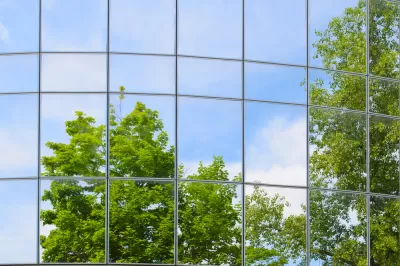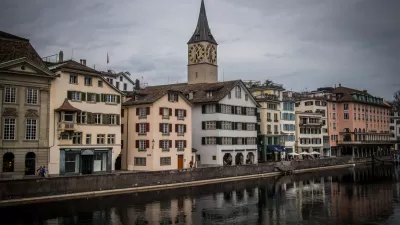Cities need to increase density, but the design of buildings can drastically affect people’s quality of life. Architects are using new tactics and tools to create innovative structures where light, air, and space are not compromised.

"Viewed straight-on from the Hudson River, 40 Tenth [in New York City] looks like a simple rectangle. Shift to the right or left, though, and the building cuts inward, creating a dramatic faceted facade. The new development is part of [Studio] Gang’s exploration into 'solar carving,' a marketable term the firm uses to describe its process of shaping buildings based on the sun’s location and its desired effect," writes Liz Stinson.
Much more sunlight is beaming down on the High Line below — over three times the number of hours that would have resulted from a building that used convention design principles. The desire to limit shadows and bolster open space in dense urban areas is not new, says Stinson. But technology is giving architects and designers new tools to creatively tackle the challenges.
Underground roads, sunken and street-level plazas, and accessible public spaces are all strategies to help counter the negative effects of densification. "It’s getting easier for architects to ensure that discreet buildings are designed with an eye toward the long-term livability of cities," notes Stinson.
FULL STORY: Tall buildings are leaving cities in darkness. These architects have a radical fix

Maui's Vacation Rental Debate Turns Ugly
Verbal attacks, misinformation campaigns and fistfights plague a high-stakes debate to convert thousands of vacation rentals into long-term housing.

Planetizen Federal Action Tracker
A weekly monitor of how Trump’s orders and actions are impacting planners and planning in America.

Chicago’s Ghost Rails
Just beneath the surface of the modern city lie the remnants of its expansive early 20th-century streetcar system.

Bend, Oregon Zoning Reforms Prioritize Small-Scale Housing
The city altered its zoning code to allow multi-family housing and eliminated parking mandates citywide.

Amtrak Cutting Jobs, Funding to High-Speed Rail
The agency plans to cut 10 percent of its workforce and has confirmed it will not fund new high-speed rail projects.

LA Denies Basic Services to Unhoused Residents
The city has repeatedly failed to respond to requests for trash pickup at encampment sites, and eliminated a program that provided mobile showers and toilets.
Urban Design for Planners 1: Software Tools
This six-course series explores essential urban design concepts using open source software and equips planners with the tools they need to participate fully in the urban design process.
Planning for Universal Design
Learn the tools for implementing Universal Design in planning regulations.
planning NEXT
Appalachian Highlands Housing Partners
Mpact (founded as Rail~Volution)
City of Camden Redevelopment Agency
City of Astoria
City of Portland
City of Laramie



























